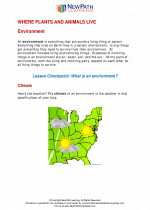Canyons
A canyon is a deep, narrow valley with steep sides. It is typically formed by the erosion of the Earth's surface over millions of years, often by the flow of water through the area. Canyons can be found all over the world and come in various shapes and sizes. They are often characterized by their dramatic cliffs and the presence of a river or stream at the bottom.
Formation of Canyons
There are several ways in which canyons can form:
- Water Erosion: The most common way canyons are formed is through the erosion caused by water, such as rivers or streams cutting through the rock over time.
- Glacial Erosion: Glaciers can also carve out canyons as they move, scraping away at the land beneath them.
- Wind Erosion: In some cases, canyons can be formed by the gradual erosion caused by wind wearing away at the rock.
- Tectonic Activity: Canyons can also be formed by the movement of tectonic plates, which can push the Earth's surface upward, creating deep valleys.
Famous Canyons
There are many famous canyons around the world, including:
- Grand Canyon: Located in Arizona, USA, the Grand Canyon is one of the most famous canyons in the world, known for its immense size and colorful rock formations.
- Colca Canyon: Situated in Peru, this canyon is one of the deepest in the world and is home to the Andean condor.
- Antelope Canyon: Found in Arizona, USA, this slot canyon is famous for its stunning rock formations and light beams that shine through the openings in the rock.
- Tiger Leaping Gorge: Located in China, this canyon is known for its dramatic cliffs and the rushing waters of the Jinsha River.
Study Guide
Here are some key points to remember about canyons:
- What is a canyon and how is it formed?
- What are the different ways in which canyons can form?
- Describe the characteristics of canyons.
- Where are some famous canyons located and what makes them unique?
- What are some of the factors that can contribute to the erosion of canyons?
Remember to study the formation processes, characteristics, and famous examples of canyons to have a comprehensive understanding of this geological feature.
[Canyons] Related Worksheets and Study Guides:
.◂Science Worksheets and Study Guides Third Grade. Where plants and animals live
Study Guide Where plants and animals live
Where plants and animals live  Worksheet/Answer key
Worksheet/Answer key Where plants and animals live
Where plants and animals live  Worksheet/Answer key
Worksheet/Answer key Where plants and animals live
Where plants and animals live  Worksheet/Answer key
Worksheet/Answer key Where plants and animals live
Where plants and animals live  Vocabulary/Answer key
Vocabulary/Answer key Where plants and animals live
Where plants and animals live  Vocabulary/Answer key
Vocabulary/Answer key Where plants and animals live
Where plants and animals live 

 Worksheet/Answer key
Worksheet/Answer key
 Worksheet/Answer key
Worksheet/Answer key
 Worksheet/Answer key
Worksheet/Answer key
 Vocabulary/Answer key
Vocabulary/Answer key
 Vocabulary/Answer key
Vocabulary/Answer key

The resources above cover the following skills:
LIFE SCIENCE
Unity and Diversity
Construct an argument from evidence to explain the likelihood of an organism’s ability to survive when compared to the resources in a certain habitat (e.g., freshwater organisms survive well, less well, or not at all in saltwater; desert organisms survive well, less well, or not at all in woodlands).
Create models that illustrate how organisms and their habitats make up a system in which the parts depend on each other.